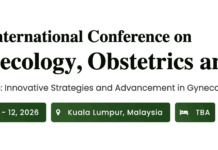- In 2003, an Australian woman was found guilty of murdering her four children over a 10-year period.
- In 2019, researchers discovered that two of the children had a rare genetic mutation that can cause sudden cardiac death.
- Last week, 90 scientists from around the world signed a petition urging the Governor of New South Wales for the woman’s release.
In 2003, Kathleen Folbigg was sentenced to 30 years in prison after the court found her guilty of murdering her four children. However, for the past 18 years, she has continued to maintain her innocence. Now, based on new scientific evidence, scientists are calling for the immediate release of Folbigg. Ninety scientists, including two Nobel Laureates, have signed a petition asking the Governor of New South Wales for her immediate pardon. The petition is based upon the findings of a recent inquiry.
To my knowledge, this is the first case in which a court (anywhere in the world) has used whole-genome sequencing to find evidence of a cause of death.
Professor Carola Vineusa, one of the signatories from the Australian National University
Kathleen Folbigg – Australia’s Worst Female Serial Killer
At the age of 21, Kathleen Folbigg gave birth to her son Caleb. After a troubled childhood, this felt like a moment of wholeness for her. However, that moment of happiness soon came to an end, and 19 days later Caleb died. At the time, Doctors blamed it on sudden infant death syndrome (SIDS).
A year later, she gave birth to her son Patrick, a perfectly healthy baby. But four months later, Patrick suffered from a brain disorder of unknown cause that left him with epileptic fits and brain damage. And at the age of 8 months, he died from asphyxia due to airway obstruction; a complication of his seizures.
Folbigg’s third child, Sarah, died in 1993 at the age of 10 months. Four days prior, her doctor had prescribed her antibiotics for a croupy cough. Sara’s death was listed as SIDS on her death certificate. Later in 1999, her fourth child, Laura, died two days after being treated with paracetamol and pseudoephedrine. She was 18 months old at the time. Pseudoephedrine can trigger cardiac arrhythmias in children, and Laura’s autopsy had found evidence of myocarditis.
In 2001, Folbigg was arrested after her husband found her diary and took it to the police. Despite no confession, no evidence of abuse or smothering, the jury found her guilty of murder and manslaughter. The prosecution had argued that four infant deaths are highly unlikely and can’t be labelled coincidental. Thus, she received a prison sentence of 30 years.

What Does the Science Say?
However, in 2018, scientists began an inquiry into Folbigg’s case. They hypothesized that genetic mutations that cause respiratory failure or arrhythmia can likely explain the sudden death in infants. Therefore, researchers began conducting genomic testing on the mother and the children.
Results revealed that both the daughters, along with Folbigg, had a mutation in the CALM2 gene. This particular gene is responsible for uptake and transfer of calcium in cardiac cells. Moreover, its variant is known to cause sudden cardiac death in children.
Based on the evidence presented to the inquiry and the fresh scientific evidence obtained by the international group of experts that studied the CALM2 mutation, a reasonable person should have doubts about Ms Folbigg killing her four children.
Petition to the Governor of New South Wales
Furthermore, a re-analysis of the genes also found that both the boys had a rare mutation in the BSN gene. In mice, the gene variant has shown to cause lethal epileptic fits. Scientists are currently looking further into its role in humans.
In conclusion, researchers believe the scientific evidence is sufficient enough for a reassessment of the verdict.
Reference:
Brohus, Malene, et al. “Infanticide vs. Inherited Cardiac Arrhythmias.” EP Europace, vol. 23, no. 3, 2020, pp. 441–450., doi:10.1093/europace/euaa272.




